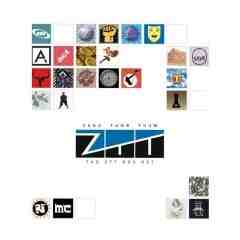In 1983, amid all the colour and fizz of the last golden age of pop, (well, I think so…discuss below) two friends of mine were asked to provide lyrics and vocals for a new track, intended to be the pilot for a new kind of record label.
The label was not quite ZTT at that point and it was NME journalist Paul Morley, who desired the vocals from the "boy with the bow tie" (the boy being Mike Finney, cherubic ‘anti-star’ at the helm of Manchester’s Distractions and his singing partner, Julie Middles, close relation of yours truly). A tape duly arrived in the post and, after two days of frenzied lyric scribbling, the pair booked into Stockport’s Cavalier Studios to lay down the vocals. That was where I first encountered The Art of Noise’s sublime ‘Close to the Edge’. I was immediately dumbstruck and somewhat saddened. It was a record like none I had ever encountered before and I have not come across anything remotely like it since. My sadness was simply for my friends.
“I doesn’t need you,” I told them. “Paul Morley is wrong. This is a perfect recording as it is and any vocals would simply be complicating it.” I guess I was correct. Despite receiving enthusiastic playing by Marc Radcliffe on his Piccadilly Radio Show, ‘Transmission’, the vocal track would never emerge. ‘Close To The Edge’ of course, would become a huge hit in several guises and the label set up by Trevor Horn, his wife Jill Sinclair and Paul Morley – who, in his brilliant sleeve notes here, admits to working in the ‘dream department’ – would be famously named ZTT…or Zang Tumb Tuum and could be spelled any way you wished.
I immediately fell in love with Morley’s concept. Until that point, most record labels were simple banking and marketing outfits, as cold as ice and bereft of any aesthetics in the boardroom. ZTT would be different. Paul Morley had been doing a great deal of reading. Tom Wolfe, Thomas Pynchon, Roland Barthes, Martin Amis….just imagine a label that could change shape and texture, a label that would assume the artistic licence of such writers? What an amazing concept. I, as a fan, immediately bought into this and convinced myself that I would devour every single release.
The fact that 25 years have elapsed and I sit with a box set, 50 per cent of which I have never heard before, might seem disappointing. For ZTT never really became the label of my dream… although why should it? It wasn’t my dream, was it? Somewhere along the line, my solid notions for such a label became somewhat fragmented. The roster became disparate and, before the demise of Frankie Goes To Hollywood, started to seem lost… rudderless.
However, the 25 years of work that is neatly contained here now seems more than worthy of re-investigation. Unlike most box sets… in fact unlike ALL other box sets, a trainspotterish nostalgia on behalf of the listener is not necessary. This feels most unlike a dusty archive or, indeed, a gathering of failed recordings and collectable ‘alternatives’.
In fact, to approach it as a ‘fan’ would be positively be a disadvantage. It is difficult to imagine how the same person could enjoy Shane MacGowan’s rather perfunctory Sid Vicious-like version of ‘My Way’ and, say, Andrew Poppy’s ‘Kink Konk Adagio’. Well it’s possible although, as you surge through these 47 tracks plus 18 gloriously unhinged videos, it’s impossible to locate any unifying thread. Maybe that was always Morley’s point. However, and with a lovely irony, you can’t help but feel the entire beast of ZTT is simply fizzing away in all directions. A box of fireworks, set alight, spitting and popping away.
As such, truly golden moments – 808 State meeting Bjork on ‘Ooops’, the LFO mix 11 of Afrika Bambattaa’s ‘Don’t Stop…Planet Rock’, Art of Noise’s ‘Moments in Love’ and several slabs of Seal among them – are punctuated by odd beat ideas, notions and wayward dreams. Perhaps the true heart of ZTT lies in the shadows, in the areas where, successful of not, no other record label would dare to tread. Conceive of a place where hip-hop meets contemporary classical, where low-life folksy inebriation (MacGowan, MacColl) meets the reserve of electronica and where the full force of commercial pop superiority (Frankie) meets the growl of Raging Speedhorn. What a mysterious place indeed.
Disc four here presents the aforementioned promo video collection, beginning with Anton Corbijn’s first distinctive direction (Propaganda’s ‘Dr Mabuse’), which immediately relates to his infamous treatment of Joy Division’s ‘Atmosphere’ and, beyond that, ‘Control’. He would appear to be the perfect ZTT video man, as his intention is to stretch the songs into warped caricature rather than polishing for MTV.
Curiously, the dullest moments here belong to the most successful item of this entire box wet, Frankie’s tiresome ‘Two Tribes’. Indeed, the ONLY track seems now to be wearily wrinkled and sighing. Think ‘inside the box’. A different world awaits.


